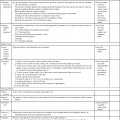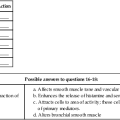At the conclusion of this chapter, the reader should be able to: • Define point-of-care testing (POCT). • Cite some advantages and disadvantages of POCT. • Differentiate among the four different types of testing categories. • Correctly answer case study related multiple choice questions. • Be prepared to participate in a discussion of critical thinking questions. • Describe the principle and clinical application of one POCT assay. 1. Waived tests. Simple procedures with little chance of negative outcomes if performed inaccurately. 2. Moderately complex tests. More complex than waived tests but usually automated (e.g., enzyme immunoassays). 3. Highly complex tests. Usually nonautomated or complicated tests requiring considerable judgment (e.g., serum protein electrophoresis). 4. Provider-performed microscopy tests. Slide examinations of freshly collected body fluids. Test complexity is determined by criteria that assess knowledge, training, reagent and material preparation, operational technique, QC-QA characteristics, maintenance and troubleshooting, and interpretation and judgment. Any over-the-counter test approved by the U.S. Food and Drug Administration (FDA) is automatically placed into the “waived” category. POCT falls within the “waived” or “moderately complex” category. The Centers for Disease Control and Prevention (CDC; www.cdc.gov) has invited providers to participate in a new performance evaluation program (HIV Rapid Testing MPEP) that offers the external evaluation of rapid tests for human immunodeficiency virus (e.g., OraQuick Rapid HIV-1 Antibody Test) and other licensed tests (e.g., MedMira Reveal Rapid HIV-1 Test).
Point-of-Care Testing
Testing Categories
Quality Control Standards
Point-of-Care Testing






